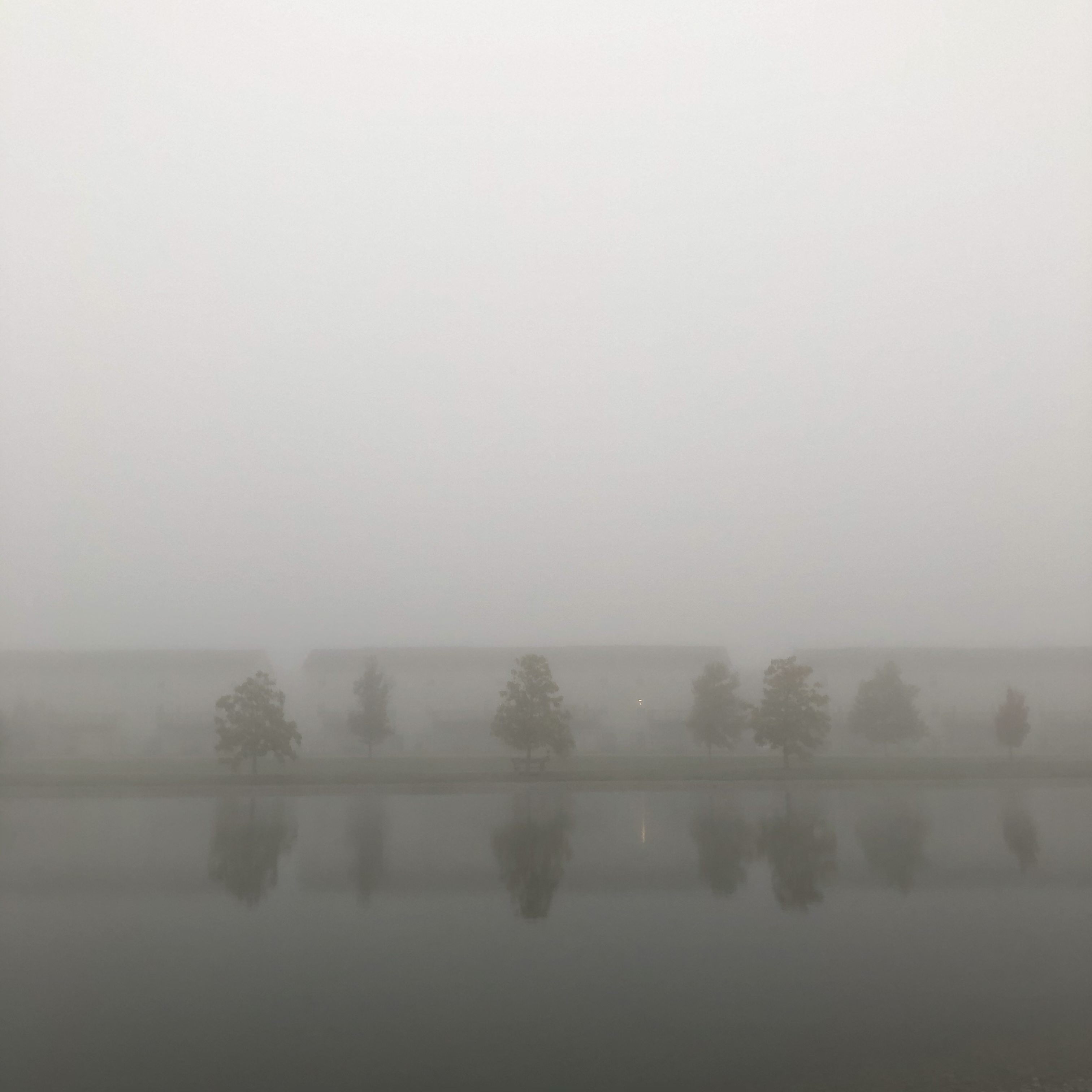피아노 삼중주를 위한, "추분"
I. The Thin Place
제 1악장. “얇은 곳”
II. Tempo di Bossa Nova–Dancing Lights of Departing Souls
제 2악장. “떠나는 혼불의 춤"
Duration: ca. 17 minutes

Chukyung Park, violin, Seungwon Chung, cello, Hyeyeon Jung, piano
World Premiere
October 15 2025, Purugio Hall, Seoul, Republic of Korea
Autumnal Equinox takes its title and inspiration from the poem 추분 (“Autumnal Equinox”) by the Korean poet Ryu Si-hwa. It was the imagery of seasonal thresholds, or the liminality itself, in Ryu’s poetry that resonated deeply with me: the temporal but destined journey from autumn into winter, a passage that departs from life (light/summer) and drifts toward the realm of death (darkness/winter)—and the surreal, ominous temporary space in between.
In the poem, darkness, night, and winter appear as metaphors for death, contrasted with the cold brilliance of the autumn stars. At the same time, the protagonist’s resistance to death and sheer inner vitality and desire emerge with striking and life-affirming energy: “The eyelids of the planet tremble. / An old cry lives within me.” This juxtaposition of inner flame against pale starlight, “Until yesterday, I memorized the names of constellations outside, but from today, I gaze into the fire within me,” forms the basis of the first movement, The Thin Place.
The second movement, Dancing Lights of Departing Souls, is drawn from Ryu’s haunting vision of “late fireflies rising—no, they are not fireflies, but the lights of souls… the final dance of souls leaving after unfulfilled love.” This imagery suggested to me a fleeting yet luminous dance at the dusk of life. I shaped the movement as a kind of passacaglia, with a hint of modern harmonic saturation. Onto this framework, I layered rhythms and gestures drawn from bossa nova, which I have loved since my early years, to create a luminous, dance-like mobile atmosphere that mirrors the exotic and almost otherworldly imagery of the poem.
〈추분〉은 한국 시인 류시화의 동명 시 「추분」에서 제목과 영감을 얻은 곡입니다. 저는 류시화 선생님의 시에서 느껴지는 계절의 변화, 혹은 그 ‘경계성’이 갖는 의미에서 에 깊은 울림을 얻었습니다. 시 속에는 가을에서 겨울로 향하는 거역할 수 없는 시간의 여정, 즉 삶(빛/여름)으로부터 떠나 죽음(어둠/겨울)의 영역으로 흘러가는 흐름, 그리고 그 사이에 존재하는 초현실적이고도 신령스러운 찰나적 시공간에 대한 이미지들이 담겨 있습니다.
시 속에서 어둠, 밤, 겨울은 죽음의 은유로 등장하며, 이는 차가운 가을 별빛과 대조되어 표현됩니다. 동시에 시적 화자의 죽음에 대한 저항과 강렬한 내적 생명력, 그리고 삶에 대한 절절한 의지는 굉장히 선명한 에너지로 드러납니다. “행성의 눈꺼풀이 떨린다. / 내 안에 오래된 울음이 살고 있다.” “어제까지는 밖에 있는 별자리 이름 외웠으나 오늘 부터는 내 안의 불을 응시한다.” 이처럼 희미한 별빛에 맞서는 내면의 불꽃의 대비가 제1악장 “얇은 곳” (The Thin Place)의 근간이 되었습니다. Thin Place는 아일랜드 전통에서 유래한 개념으로, 이승과 저승, 물질과 영혼의 경계가 희미해져 서로 맞닿는 신성한 공간을 의미합니다.
제2악장 “떠나는 혼불의 춤” (Dancing Lights of Departing Souls)은 시 속에 등장하는 인상적인 구절 — “늦 반딧불들이 떠오르기 시작한다. 아니다, 혼들의 빛이다. 서툴게 사랑하다 떠나는 혼들의 마지막 춤” — 에서 영감을 얻었습니다. 저는 이 이미지를 통해 삶의 황혼 속에서 피어오르는 덧없지만 아름답게 스러지는 혼불의 춤의 모습을 떠올렸습니다. 이 악장은 반복되는 베이스 선율 위에 변주가 지속되는 파사칼리아 형식으로 구성하였으며, 그에 보사노바의 리듬과 색채를 더해 보았습니다. 남미의 몽환적이고 이국적이며 색채감으로 가득한 춤곡의 형식을 빌어서 (보사노바는 삼바의 리듬에 기인합니다), 시에서 표현된 초현실적 세계의 분위기와 생의 마지막 빛을 머금은 춤사위의 모습을 담아보고자 하였습니다.
“
1.
태풍이 찢어 놓은 풍경을
지빠귀가 깁고 있다
바람에 얼굴 긁힌 별들 불가로 모이고
북두의 국자 기울어
더 많은 어둠을 쏟는다
달력에 남은 날짜 세어 보지만
오늘은 단 하루뿐
2
다른 날들보다 저녁이 일찍 찾아오고
새벽은 점점 더 늦게 온다
어제까지는 밖을 내다보았으나
오늘부터는 안을 들여다본다
빛과 어둠의 길이
잃은 것과 얻은 것 같아져서
기쁨은 굳이 슬픔을 지우지 않고
슬픔도 굳이 기쁨을 지우지 않는다
지금은 덧문을 닫고 타인의 거짓이 아니라
자신의 진실과 마주할 시간
이맘때부터 고독해지는 사람은
충분히 사랑하지 않은 것
어제까지는 밖에 있는 별자리 이름 외웠으나
오늘부터는 내 안의 불을 응시한다
[하략]
“
– 류시화, 추분
